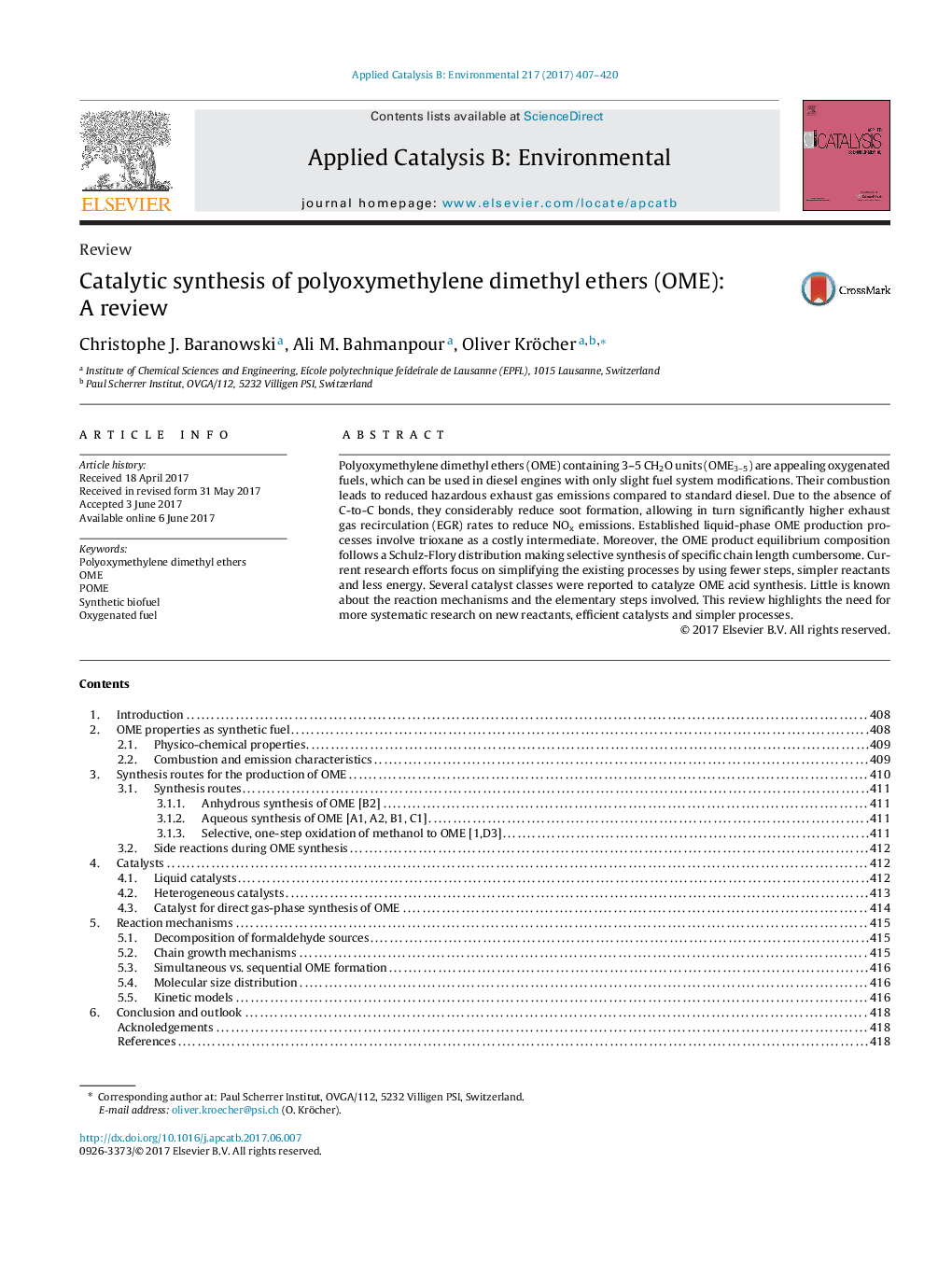| Article ID | Journal | Published Year | Pages | File Type |
|---|---|---|---|---|
| 6453987 | Applied Catalysis B: Environmental | 2017 | 14 Pages |
â¢Polyoxymethylene dimethyl ether (OME) are synthetic, functionalized oxygenate fuels.â¢OME combustion exhibits strongly reduced soot particle formation.â¢Current liquid-phase synthesis involves costly intermediates.â¢OME product distribution follows the Schulz-Flory distribution.â¢Adoption of this technology requires efficient catalysts for selective synthesis.
Polyoxymethylene dimethyl ethers (OME) containing 3-5 CH2O units (OME3-5) are appealing oxygenated fuels, which can be used in diesel engines with only slight fuel system modifications. Their combustion leads to reduced hazardous exhaust gas emissions compared to standard diesel. Due to the absence of C-to-C bonds, they considerably reduce soot formation, allowing in turn significantly higher exhaust gas recirculation (EGR) rates to reduce NOx emissions. Established liquid-phase OME production processes involve trioxane as a costly intermediate. Moreover, the OME product equilibrium composition follows a Schulz-Flory distribution making selective synthesis of specific chain length cumbersome. Current research efforts focus on simplifying the existing processes by using fewer steps, simpler reactants and less energy. Several catalyst classes were reported to catalyze OME acid synthesis. Little is known about the reaction mechanisms and the elementary steps involved. This review highlights the need for more systematic research on new reactants, efficient catalysts and simpler processes.
Graphical abstractDownload high-res image (146KB)Download full-size image
